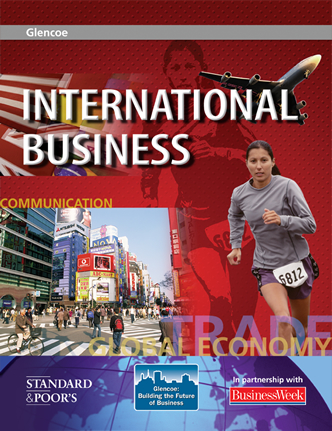
International BusinessChapter 9: Organizational Management and StrategyBusinessWeek OnlineRead this article. Then write a paragraph that describes how organizational strategy impacts a company's ability to compete overseas. A Game Plan for Global GrowthTo succeed in China, India, and other emerging markets, companies need troops—and executives—on the ground, says Boston Consulting Group It is hard to find a CEO these days who will not declare that China, India, and other big emerging markets figure prominently in his company's future growth. But how many are putting their money where their mouths are? And how many are building the types of organizations that can deliver what they want? Not nearly enough. That's the conclusion borne out by a new Boston Consulting Group (BCG) study. According to a survey of 100 senior executives at top Western corporations, the average company expects to have one-third of its sales coming from rapidly developing economies like China and India by 2010, compared to 21% now. That's not surprising, given that more than 40% of world economic growth over the next decade is expected to come from China, India, Central and Eastern Europe, and Latin America. But there is a mismatch between executives' visions and their actions. True, almost all companies are boosting their overseas presence. A full two-thirds of companies BCG surveyed plan a "significant" increase the investments in sales activities in big emerging markets this year, while slightly more than half are doing the same in manufacturing. By their own admission, however, 60% of executives aren't investing enough in these markets. LOCAL KNOWLEDGE. More telling is the lack of action that most executives have taken to refashion their corporate organizations to compete on a truly global scale. Only 18% of employees, 13% of assets, and 10% of the top 200 executives in the average company surveyed are located in key emerging markets. What's more, there is a misalignment "in the seniority of managers and the quality of resources that companies put on the ground," the study argues. Of the 100 largest corporations in the U.S., 85% have sales abroad. Yet only one out of five has at least one foreign-based director on its board. In short, this is not a portrait of a corporate America that is coming to grips with the competitive challenges ahead. "If you expect 30% sales growth, but 1% of your senior management and none of your directors [are] from emerging markets, that's an issue," says Hal Sirkin, the head of BCG's global operations practice. "You won't be able to understand what is going on over there, and you will end up making the wrong decisions." The mismatch between goals and resources could partly be because the scale and variety of changes to adjust to—what BCG describes as "a massive shift in the world's economic center of gravity"—are so immense. In industries from telecom to cars, China and India are fast becoming the biggest markets in the world. But to be globally competitive nowadays requires much more than the ability to sell. POWER CENTER. Because these nations are the world's biggest pools of low-cost engineers, scientists, and service workers, multinationals also must be good at hiring, retaining, and managing talent there. They must be adept at using these countries as sources of manufacturing, back-office processing, components, and new technologies. A solid presence on the ground also is required to keep abreast of fast-rising domestic companies that could soon emerge as world-class rivals. "This array of simultaneous activities puts enormous strain on management," BCG notes. The prevailing mindset of most U.S. corporations limits the ability to make the investments and organizational changes that are required. For one thing, there still is a general reluctance to post top executives in big emerging markets for long stints—or to empower locally based managers to make big strategic moves or take responsibility for profits or losses. The U.S. obsession with cuts, which became a top priority after the 2001 tech bust, is another hindrance. Keeping lean may be appropriate in mature markets at home. But not in ones that are growing by 20% to 50% a year, where companies must be prepared to invest "quickly, decisively, repeatedly, and often in advance of demand," BCG argues. Even if a CEO grasps what's at stake in emerging markets, the sense of urgency often doesn't trickle down into lower levels of the management hierarchy, "where the really tough decisions and tradeoffs must be made." WINNING FORMULA. What should companies do to organize themselves to compete more effectively from Shanghai to Sao Paulo? BCG suggests six fundamentals: Companies need a deeply engaged leadership, continuous development of global talent, the ability of multinational staff at all levels to collaborate, common business processes, shared technology platforms, and core corporate values that are shared by employees across the globe. There is no shortage of business gurus touting rival formulas for the globally competitive company of the future. What is clear, however, is that the winners in the coming decades are likely to be corporations that have transformed themselves to take full advantage of the rise of China and India. By Pete Engardio Copyright 2000–2006 by The McGraw-Hill Companies Inc. All rights reserved. |  |















